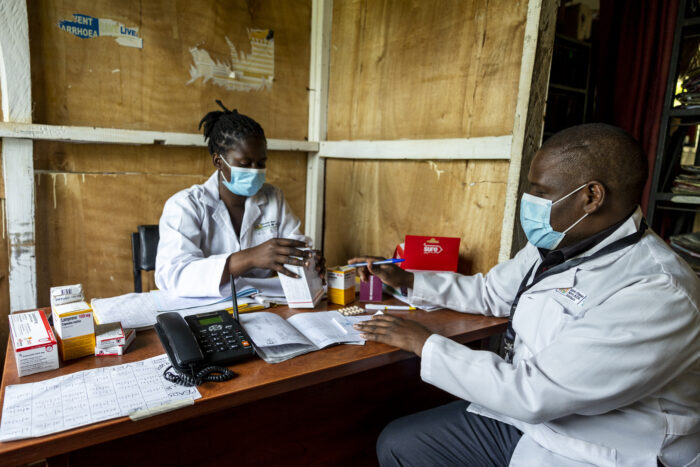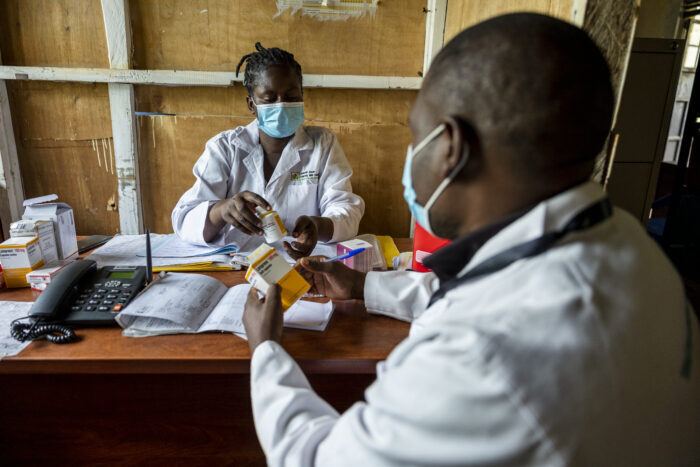Six years ago, Homabay County, Kenya, was staring at a catastrophe with a runaway HIV prevalence of 25.7 percent against a national average prevalence of 6.04 percent, according to the the Kenyan National AIDS and STI Control Programme.
Approximately 10,600 people tested positive for HIV per year and more than 3,300 people died of AIDS-related causes each year.
 At the time, 89 percent of women in need of the prevention of mother-to-child transmission (PMTCT) intervention were reached, with a PMTCT viral suppression rate of 93 percent. As such, in every 100 children under the age of 18 months tested for HIV, four were positive.
At the time, 89 percent of women in need of the prevention of mother-to-child transmission (PMTCT) intervention were reached, with a PMTCT viral suppression rate of 93 percent. As such, in every 100 children under the age of 18 months tested for HIV, four were positive.
Against this backdrop, Justus Ochola who is the County’s deputy AIDS and STI coordinator says that mentorship was urgently needed as a sustainable approach to equip health care workers at the sub-county hospitals, health centers, and dispensaries with skills to match the challenge presented by HIV.
“Mentorship is critical as it builds the capacity of health care workers to properly manage the County’s cohort of 126,000 HIV patients. It has also facilitated the tracking of people unaware of their HIV positive status,” Ochola explains.
Daniel Mumelo, a senior technical officer at the Elizabeth Glaser Pediatric AIDS Foundation (EGPAF) says that at the top of the mentorship structure is the Nyanza/Western Technical Working Group that covers 10 counties.
Maureen Odong, a Technical Advisor at EGPAF, says that 98 percent of women in need of PMTCT services in Homabay County are receiving them.
In each county, there is a sub-county lead mentor who coordinates mentorship activities with other mentors attached to all health facilities at the sub-county level.
“From the sub-county, we have the county mentorship program whose activities are coordinated by the county lead mentor and at this level, there is a County Technical Working Group (TWG) with linkages to the regional TWG,” Mumelo explains.
Corneleous Edward Okal, Homabay County’s lead HIV mentor says that mentors at the sub-county level build capacities of health care workers at all health facilities within that sub-county for better management of HIV cases.
“If a clinician at a dispensary has a difficult HIV case, say of a patient who is failing on ART, the case is first handled at the sub-county level before it is escalated to the County TWG and if need be to the regional TWG where a team of expert provide guidance on a case-by-case basis,” Okal expounds.
Our objective is zero HIV infections. Maureen Odong
The mentorship structure is so effective that HIV trends are reversing. Maureen Odong who is a technical advisor at EGPAF says that 98 percent of women in need of PMTCT services in Homabay County are receiving them.
“Eleven out of every 100 children under the age of 18 months will test positive for HIV at the national level compared to 1 in every 100 children in Homabay County. Our objective is zero infections,” she emphasizes.
Clinicians and nurses managing HIV patients work closely with their mentors to identify and manage ART failure including pediatrics ART failure and to make timely decisions on the way forward.
“Previously, HIV patients remained on a failing first- or second-line therapy longer than recommended due to a lack of capacity to identify and manage these patients leading to increased mortality,” says Mumelo.
 Today, Okal says that AIDS-related deaths have reduced by 50 percent overall because the mentorship structure encourages advanced review of difficult HIV cases.
Today, Okal says that AIDS-related deaths have reduced by 50 percent overall because the mentorship structure encourages advanced review of difficult HIV cases.
In 2016, Homabay County forwarded less than 50 HIV cases for review by the regional TWG despite the existence of many other patients in need of further consultation. In 2020, a total of 300 HIV cases were sent to the regional TWG for further consultation.
These were difficult cases of patients taking ART as guided but still failing on treatment as well as those in need of approval to undergo a HIV Drug Resistance Test.
As a result, viral suppression rates have increased, significantly lowering the risk of HIV transmission. The annual new HIV cases in Homabay County have reduced from 10,625 in 2015 to 3,080 in 2020. ART coverage has risen from 63 percent in 2016, to 95 percent in 2021.
In 2020, the Nyanza/Western TWG singled out Homabay County as the best county in HIV case management from a pool of 10 counties.




